
Innovation, Entrepreneurship and Competitiveness

Challenges and Motivations for Youth Entrepreneurship Start-Ups:Empirical study from Egypt
Entrepreneurship is a key catalyst of any economic growth, and Egyptian entrepreneurs tried to prevail. Their number grew rapidly during the past decade. But the statistics still alarming as many of them fail and seize to continue. This study tries to identify key constraints that deter young people from starting and running their own businesses and tries also to identify incentives and stimuli that might encourage young people to engage in entrepreneurial projects. For a quantitative research, 30 complete questionnaires were analyzed. The sample represented successful start-ups that worked
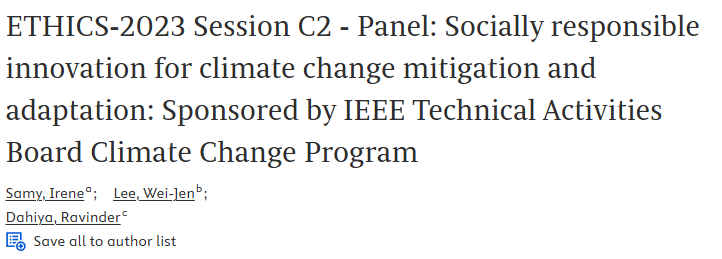
ETHICS-2023 Session C2 - Panel: Socially responsible innovation for climate change mitigation and adaptation: Sponsored by IEEE Technical Activities Board Climate Change Program
[No abstract available]
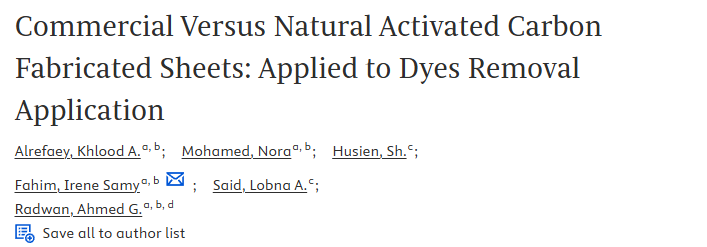
Commercial Versus Natural Activated Carbon Fabricated Sheets: Applied to Dyes Removal Application
Industrial dyes are considered one of the main causes of increased water pollution of water. Many businesses, such as steel and paper, are located along riverbanks because they require large amounts of water in their manufacturing processes, and their wastes, which contain acids, alkalis, dyes, and other chemicals, are dumped and poured into rivers as effluents. For example, chemical enterprises producing aluminum emit a significant quantity of fluoride into the air and effluents into water bodies. Fertilizer facilities produce a lot of ammonia, whereas steel plants produce cyanide. Many
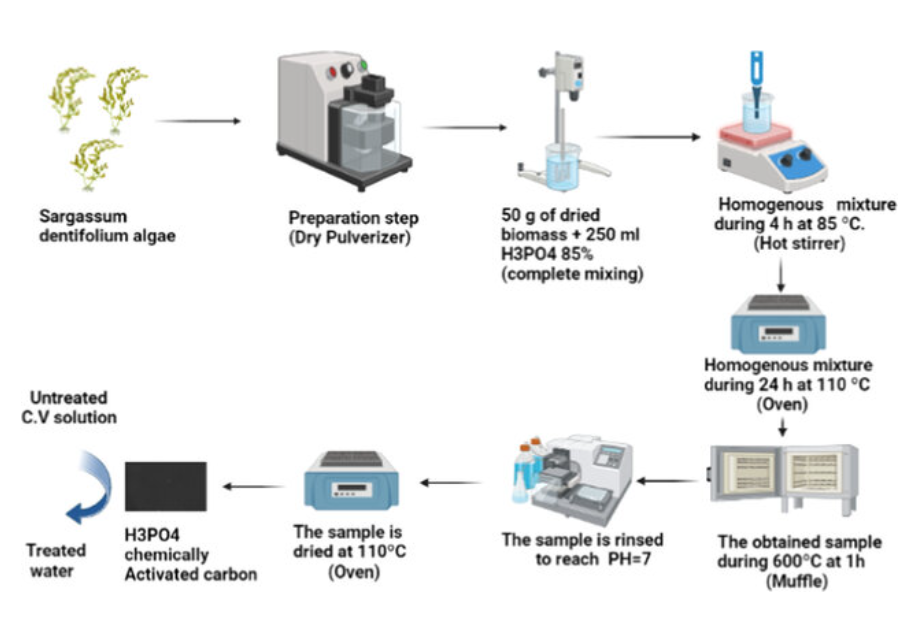
Crystal violet removal using algae-based activated carbon and its composites with bimetallic Fe0-Cu
The textile industry is considered a source of pollution because of the discharge of dye wastewater. The dye wastewater effluent has a significant impact on the aquatic environment. According to the World Bank, textile dyeing, and treatment contribute 17 to 20% of the pollution of water. This paper aims to prepare the bimetallic nano zero-valent iron-copper (Fe0-Cu), algae-activated carbon, and their composites (AC-Fe0-Cu), which are employed as adsorbents. In this paper, Synthetic adsorbents are prepared and examined for the adsorption and removal of soluble cationic crystal violet (CV) dye
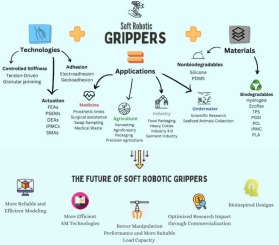
Soft robotic grippers: A review on technologies, materials, and applications
The growing need for manipulators capable of handling delicate objects with care and coexisting safely with humans has brought soft robots to the forefront as a practical and cost-effective solution. In this context, this paper aims to explore soft grippers, a unique and versatile subset of soft robots. It provides an overview of various soft grasping techniques and materials, highlighting their respective advantages and limitations, along with showcasing several designed and tested models. As medicine and agriculture are acknowledged as pivotal domains required for basic human survival, this
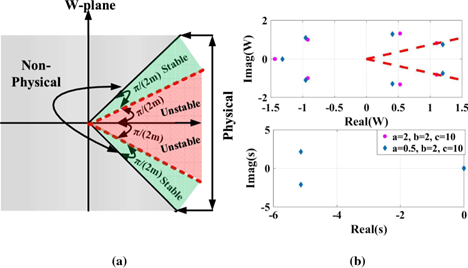
Correction to: Stability analysis of fractional-order Colpitts oscillators (Analog Integrated Circuits and Signal Processing, (2019), 101, 2, (267-279), 10.1007/s10470-019-01501-2)
Unfortunately, in the original version of the article some typos occurred. The typos have been corrected with this erratum. Below are the corrections:(Formula presented.). © 2019, Springer Science+Business Media, LLC, part of Springer Nature.
Vulnerable Road Users Detection and Tracking using YOLOv4 and Deep SORT
Over the years, The detection and tracking of Vulnerable Road Users (VRUs) have become one of the most critical features of self-driving car components. Because of its processing efficiency and better detection algorithms, tracking-by-detection appears to be the best paradigm. In this paper, a detection-based tracking approach is presented for Multiple VRU Tracking of video from an inside-vehicle camera in real-time. YOLOv4 scans every frame to detect VRUs first, then Simple Online and Realtime Tracking with a Deep Association Metric (Deep SORT) algorithm, which is customized for multiple VRU
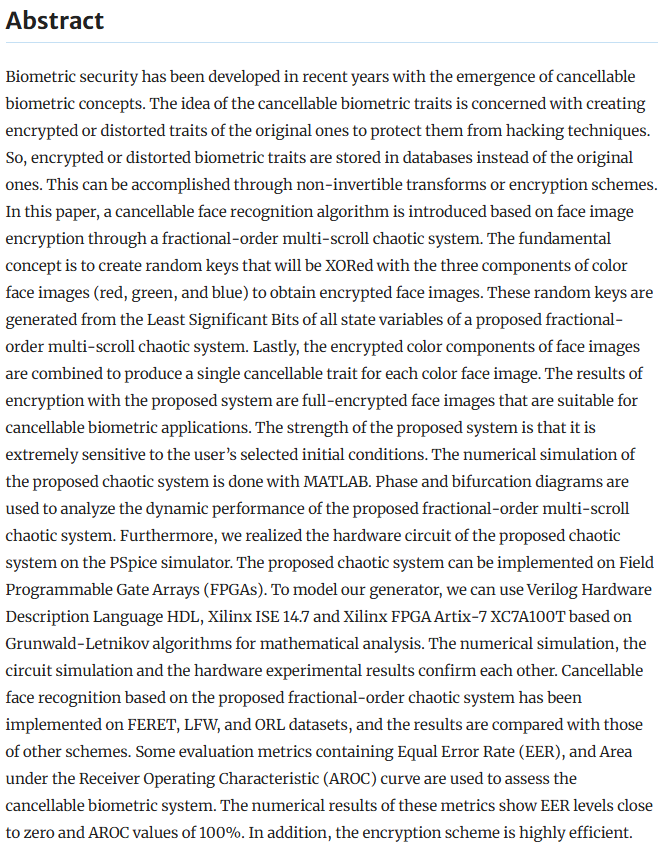
Circuit realization and FPGA-based implementation of a fractional-order chaotic system for cancellable face recognition
Biometric security has been developed in recent years with the emergence of cancellable biometric concepts. The idea of the cancellable biometric traits is concerned with creating encrypted or distorted traits of the original ones to protect them from hacking techniques. So, encrypted or distorted biometric traits are stored in databases instead of the original ones. This can be accomplished through non-invertible transforms or encryption schemes. In this paper, a cancellable face recognition algorithm is introduced based on face image encryption through a fractional-order multi-scroll chaotic
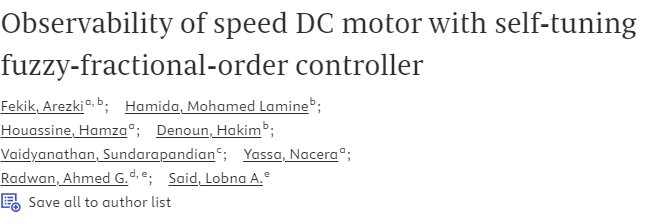
Observability of speed DC motor with self-tuning fuzzy-fractional-order controller
The DC motor is one of the simplest electrical machines used in industry since it is controlled by direct voltages and currents. These configurations have various advantages, allowing the machine to be adapted to the constraints of its specific application. The present chapter analyzes the DC motor with separate excitation without the use of a speed sensor to approximate the rotor speed. An analysis of the stability of the rotor speed estimation is performed. Enhanced control of the direct action is integrated into the adaptive observer to decrease the roundness capability of the model and
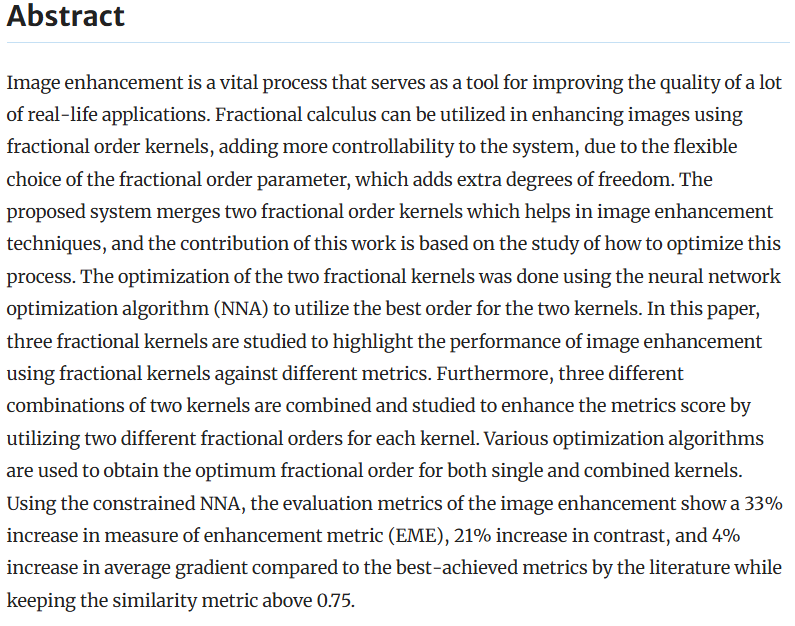
Optimization of Double fractional-order Image Enhancement System
Image enhancement is a vital process that serves as a tool for improving the quality of a lot of real-life applications. Fractional calculus can be utilized in enhancing images using fractional order kernels, adding more controllability to the system, due to the flexible choice of the fractional order parameter, which adds extra degrees of freedom. The proposed system merges two fractional order kernels which helps in image enhancement techniques, and the contribution of this work is based on the study of how to optimize this process. The optimization of the two fractional kernels was done